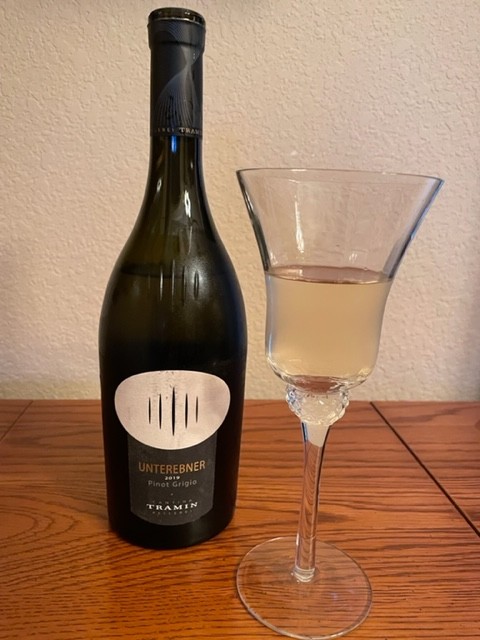By Neil Duarte
Cantina Tramin began in 1898 as the first wine cooperative in Alto Adige, started by the local parish priest. Today Cantina Tramin has 160 family owners/producers and covers 270 hectares of vineyards. It expanded in 1971 in a merger with Cantina Sociale di Egna, which added some well-known Pinot Noir vineyards.
Cantina Tramin benefits from the 300 days of sunshine each year in Alto Adige and locations 400 to 850 meters above sea level, which enjoy cool winds from the mountains and warm winds from Lake Garda. The winery produces a full range of white and red wines. We were recently sent a sample of four wines, which were tasted on separate occasions.
The first wine we tasted was a red wine, a 2020 Lagrein DOC, a 12.5% alcohol wine made from 100% Lagrein grapes. This grape is the oldest indigenous red grape in Alto Adige. The grapes received both primary and malolactic fermentation in a mixture of stainless steel and cement tanks under controlled temperatures of 28-30°C. Aging was accomplished in both stainless steel and cement for six months. The resulting wine was a very deep garnet in color with a pleasant fruit nose. It finished medium long, tannic and smooth. I rated this very nice medium red wine a 90.
Our second red was a 2020 Pinot Noir DOC, a 13% alcohol wine made from 100% Pinot Nero grapes. In Italy, Pinot Noir grapes are called Pinot Nero. The Pinot Nero grapes were hand harvested and the maceration was carried out in stainless steel tanks at 26°C with daily pump over and cap submersion to increase the extraction from the skins. Aging was done in a combination of French barriques, oak casks and stainless steel tanks for six months. The Pinot Noir was ruby in color with a light fruit nose. It finished medium long and very smooth. I rated this very nice medium red wine a 91 and recommend it for pork dishes and pastas.
Moving on to the whites, the next wine was a 2019 Nussbaumer DOC, a 14.5% alcohol offering made from 100% Gewűrztraminer grapes. Vinification began with soft pressing of the grapes with fermentation occurring slowly at a controlled temperature of 18°C in small stainless steel tanks. Must clarification was accomplished through natural sedimentation of the particles. Maturation occurred in small stainless steel tanks with constant contact with the lees followed by four months aging in the bottle. The total maturation process was a minimum of 15 months. The Nussbaumer was straw yellow in color with a complex fruit and highly aromatic nose. It finished medium, fruity and very aromatic. I rated this different but good wine a 90.

Tramin’s Unterebner wine. PHOTO: TERRY DUARTE.
Thanks to Alessandra Zambonin at Studio Cru in Italy for arranging for us to receive these wines from Cantina Tramin.




